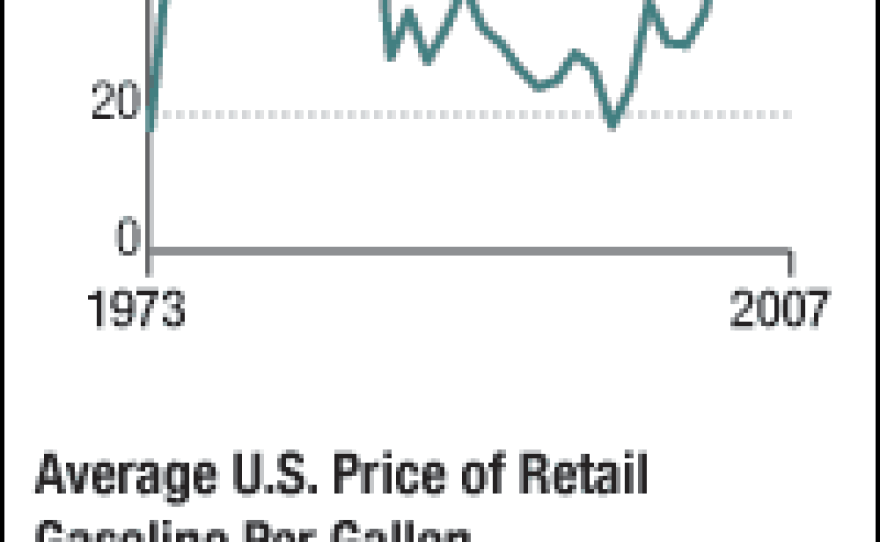

Crude oil prices are approaching uncharted territory.
Until now, the high-water mark for oil prices has been April 1980. That's when Iran threatened to cut off oil supplies in the wake of a failed military raid aimed at rescuing Americans held hostage in Tehran.
The price of West Texas Intermediate crude oil hit $39.50 that month. Adjusting for inflation, that's about $99 in today's dollars.
It has taken more than a quarter-century, but oil prices are once again approaching that level. And once again, saber-rattling between the U.S. and Iran is a significant factor.
"The current high prices have a 'back to the future' quality to them," says oil historian Dan Yergin, chairman of Cambridge Energy Research Associates.
He figures geopolitical tension in the Middle East adds a $10 or $15 "security premium" to every barrel of oil.
"What the security premium reflects is a sense of uncertainty whether geopolitical events will lead to some kind of disruption that shuts off supply," Yergin said. "The security premium really reflects the fear of the unknown."
Demand and the Weakening Dollar
Oil prices would be high even without that security premium because of growing worldwide demand. The U.S. is the world's biggest oil consumer, but other countries are catching up. A recent forecast from ExxonMobil notes that energy demand in the developing world is growing four times as fast as in Europe or the United States.
"China and India are two of the main areas," said ExxonMobil spokesman Alan Jeffers. "You can understand why when you read almost daily in the paper about standard-of-living increases in China, for example, with that massive population base, how that would have a huge impact."
The weakening of the U.S. dollar also contributes to the rise in oil prices. Because oil is priced in dollars, sellers have to charge more just to keep pace. A falling dollar also prompts more investors to buy oil as a kind of insurance policy.
"If you think about what moves commodities a lot, it's almost always the change in the currency that you're paying for them in. And that's what's going on now. The dollar is the driver behind this high oil price, I think," said David Malpass, chief economist of Bear Stearns.
One lesson of the 1980 price spike is that it didn't last forever. By the middle of the following decade, oil prices had fallen by half.
Yergin said the laws of economics suggest that today's high oil prices will eventually boost supply and slow demand. But there could be a long lag time before that happens.
Copyright 2022 NPR. To see more, visit https://www.npr.org. 9(MDAzMjM2NDYzMDEyMzc1Njk5NjAxNzY3OQ001))







